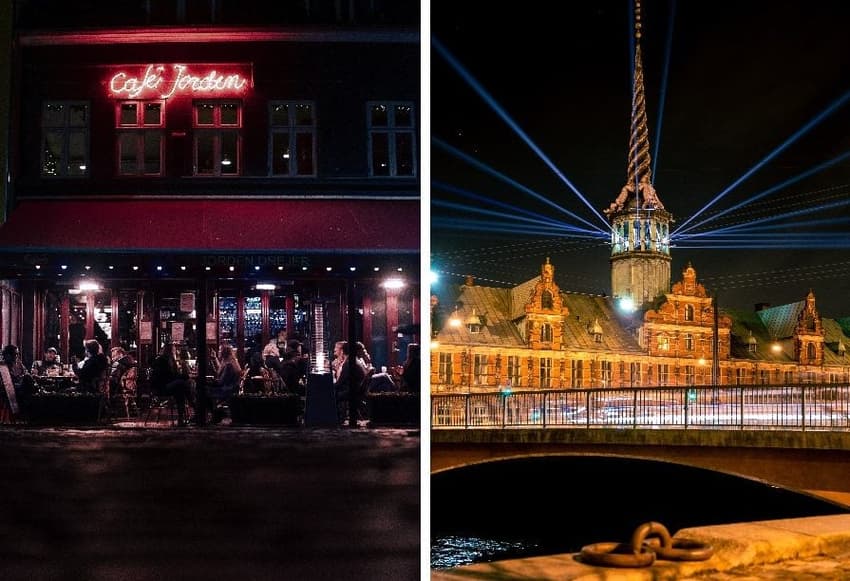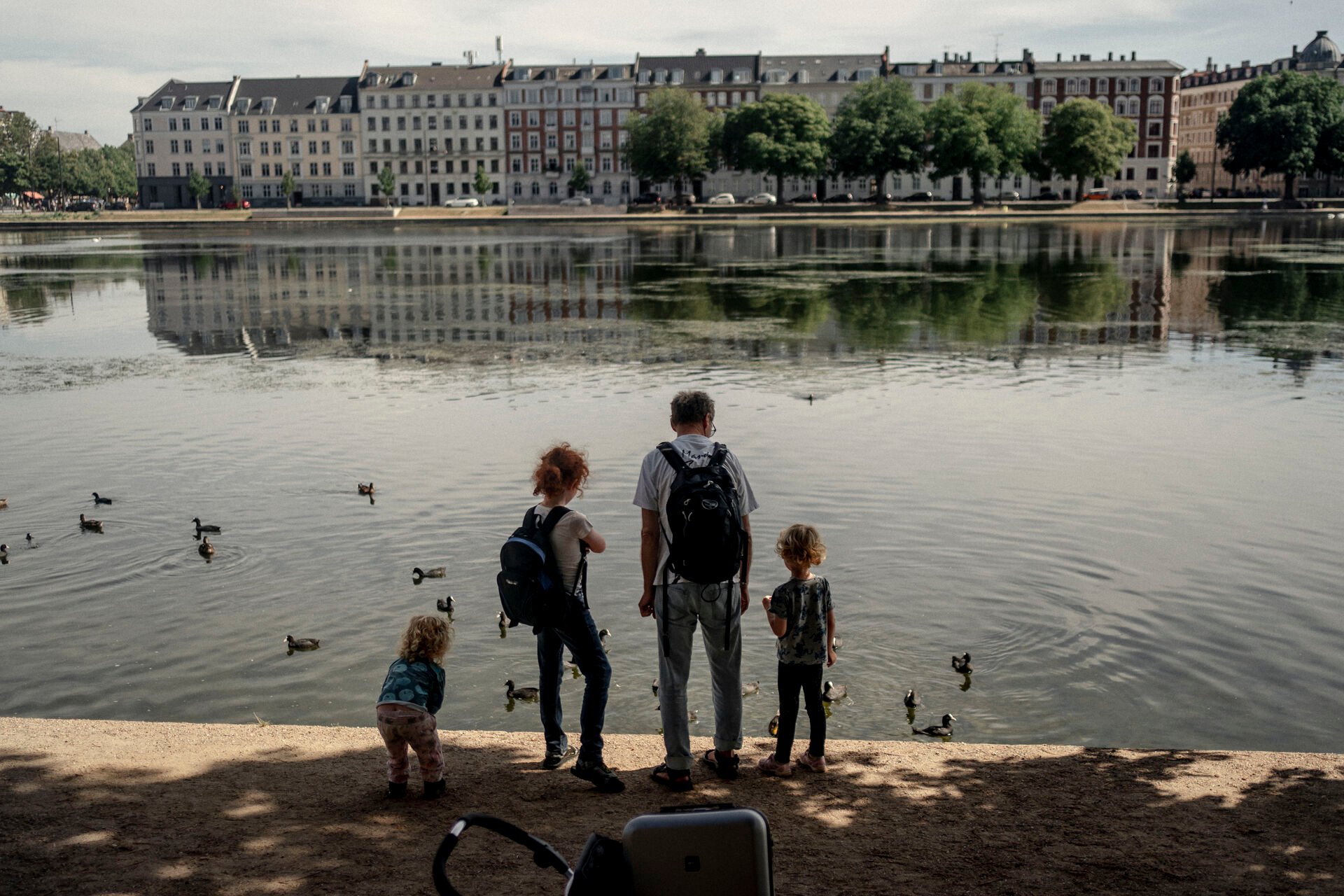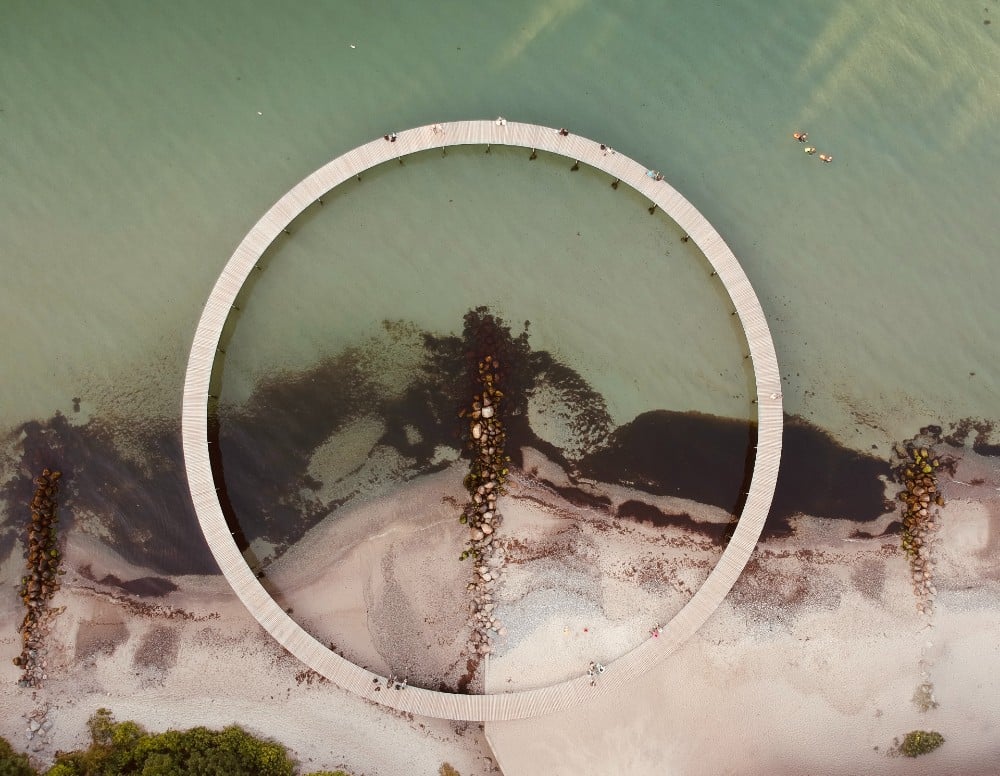Aarhus versus Copenhagen: The differences (and similarities) between Denmark’s two largest cities

The capital of Denmark and the biggest city in Jutland. There’s a lot more than the three-hour journey between them to distinguish the two largest Danish cities, Copenhagen and Aarhus.
New York or LA. Sydney or Melbourne. Oslo or Bergen. In many countries, picking between the two major cities often turns into a contest of culture, a question of lifestyle and a matter of preference.
Copenhagen has often dominated as the most famous and influential Danish city, but Aarhus has had a run on the capital in recent years, undergoing development and growth. It was the European Capital of Culture in 2017.
Each is a quintessentially Danish city which represents the country well. I’ve spent several years living in both and can’t pick a favourite, but they each have their own distinguishing charms and features.
READ ALSO: Why Aarhus is worthy of all of the hype (2016)
Language
Once you understand Danish at almost any level you can hear the difference between the Copenhagen and Aarhus dialects.
To give an example, the Copenhagen accent (københavnsk) can put a ‘break’ or stød into the middle of a word so the tone changes during the vowel, effectively breaking pronunciation of the word into two halves. Dør (“door”) pronounced this way can sound more like dø-er.
Aarhusiansk sounds different not just in its rhythm but in certain pronunciations. For example, the letter o is replaced by the deeper å in some words, such as sort (“black”) which can sound more like sårt.
There are words and structures which are more common in one dialect than the other. In Aarhus, you’re far more likely to hear something described as træls (“tiresome, annoying, a nuisance”). When you hear træls in Copenhagen, you can probably guess with a reasonable level of confidence that the speaker is not in fact from Copenhagen, but from Aarhus or somewhere else in Jutland.
If you ask people where in Denmark they are from, a native of Aarhus might say fra Aarhus af (“from Aarhus”, but more literally “from of Aarhus”) whereas a Copenhagener will just say fra København, omitting the superfluous af.
Lakes
Copenhagen’s central lakes link neighbourhoods on one side of the city to the other, spanning from Vesterbro in the west to Østerbro in the east, with the historic Inner City and diverse Nørrebro districts also on each side of the shallow lakes.
These lakes form a breathing space in the centre of Copenhagen where hundreds of city residents use them each day to go for a walk or run. In the summer, the popular bridge Dronning Louises Bro takes the character of a park as Copenhageners sit on its rails and benches to share a beer or listen to music.

Copenhagen's lakes. Photo: Mathias Svold/Ritzau Scanpix
The closest literal equivalent of this in Aarhus is the section of the canal between Mindeparken and the central square Store Torv, but it’s a far less popular spot. Unlike Dronning Louises Bro, which connects two busy but distinct parts of the city, the Aarhus canal doesn’t have naturally heavy footfall.
Aarhus doesn’t have one place that immediately springs to mind when you think of a place in the city centre to go for a run, walk or to congregate within the city space. Instead, it has several alternatives: the University Park, the area around the Dokk1 library and the redeveloped harbour, and the small grassy hill on Graven street in the Aarhus Latinerkvarter “Latin Quarter”.
The latter spot, occasionally dubbed “Hipster Hill”, is a popular space to gather on warm summer evenings, just like Dronning Louises Bro in Copenhagen.
Other natural spots
Both cities are remarkably close to nature with easy access to parks, forests and the sea. Both have a botanisk have (botanical garden) and a dyrehave (“animal park”, a protected park where wild animals, particularly small deer, freely roam).
The Copenhagen versions are both somewhat larger than their counterparts in Aarhus, but all are a good size.
They also both have beaches within the city limits: Amager Strandpark and Bellevue Strand in Copenhagen; Den Permanente and Marselisborg Strand in Aarhus (the latter is home of the Uendelige bro “Infinite Bridge”).
Just outside Copenhagen, you can trek and camp in the expansive Naturpark Amager. South of Aarhus, the 7-kilometre forest belt Marselisskoven awaits.
They might be the two biggest conurbations in Denmark, but both offer fresh air and natural surroundings in spades.

Aarhus' Infinite Bridge. Photo by Jona Troes on Unsplash
Atmosphere
It’s not easy to say something authoritative about the difference in the “vibe” between the two cities, because all individual experiences will be subjective. Mine is that Aarhus feels more laid back and relaxed and is comfortable with its status as a small city (despite being Denmark’s second largest) because it has so much to offer relative to its size: culture, nightlife, nature and more.
This hasn’t always necessarily been the case. When I first lived in Aarhus in the late 2000s, there was less to do and there seemed to be more of an inferiority complex towards Copenhagen. Aarhus has flourished since then and is now more aware of what a great place it is to be, without needing to live up to anywhere else.
As for Copenhagen: while also small on a relative scale (compared to Berlin, London or Paris), it is probably the coolest city in Scandinavia and still the place many people aspire to be.
Copenhagen feels like a big city despite its relatively diminutive size for a national capital: It has distinctive neighbourhoods with palpably different personalities, busy traffic and people in a hurry on the Metro and S-train. It’s just about big enough to swallow you up, which I don’t think you can say about Aarhus. This might not be to everyone’s taste, but I liked it. At the same time, it still feels like a very “liveable” city.
READ ALSO: Copenhagen ranked ‘best city for quality of life’ for first time in seven years (2021)
Size and infrastructure
As mentioned above, the difference in size between Copenhagen and Aarhus is an important part of what gives them distinct personalities as cities.
Aarhus has a population of 361,544 in its municipal area according to latest figures. The Copenhagen municipality is nearly twice as populous with 653,664 and if you add the population of Frederiksberg – a separate municipality but geographically part of Copenhagen – the number rises to 758,328.
Copenhagen becomes larger still when outlying municipalities, often referred to as Vestegnen (the “Western Area”) are brought into the equation as part of the Greater Copenhagen metropolitan area.
You can spend a lot longer travelling through urban sprawl in Copenhagen before reaching somewhere that looks rural. You can do this on the S-train, an equivalent of the overground rail services in London or Berlin’s S-Bahn, or on the newer Metro which recently added two new lines and is set to continue to grow.
In contrast, Aarhus has city buses and a light rail which was constructed in the 2010s, opening in 2017. It’s not universally popular but has made local transport more convenient in the part of the city it covers.
Cost of living
The worst thing about living in Copenhagen is its impenetrable rental housing market and the painfully high rent once you – after months of perseverance – find an apartment.
This situation has not been made any better by the inflation and energy crisis, although the government has limited landlords from hiking up rent in line with current inflation, capping rent increases at 4 percent.
Data shows that Copenhagen is significantly more expensive to rent housing than anywhere else in Denmark, albeit with one possible exception: Aarhus.
For those looking to rent subsidised housing (almene boliger), it can take years to get to the top of waiting lists in either Copenhagen or Aarhus. In smaller cities you might get an offer in weeks or even days.
This means many newcomers to Denmark must turn to the private rental market if they are living in either of the two main cities.
A study conducted by housing research centre Bolius in November 2020 found the cost of a 56 square-metre apartment in Copenhagen’s Nørrebro district to be 8,536 kroner per month.
Aarhus was not included in the study, so direct comparison isn’t possible. In third-largest city Odense though, there is a significant saving on Copenhagen with 8,488 kroner, a similar rent to that in Nørrebro, getting you an apartment over 50 percent bigger at 82 square metres.
Anecdotally based on personal experience: it is easier to find an apartment in Aarhus than it is Copenhagen, and a little cheaper. But that makes it neither easy nor cheap, and the difference seems to be narrowing.
Comments
See Also
New York or LA. Sydney or Melbourne. Oslo or Bergen. In many countries, picking between the two major cities often turns into a contest of culture, a question of lifestyle and a matter of preference.
Copenhagen has often dominated as the most famous and influential Danish city, but Aarhus has had a run on the capital in recent years, undergoing development and growth. It was the European Capital of Culture in 2017.
Each is a quintessentially Danish city which represents the country well. I’ve spent several years living in both and can’t pick a favourite, but they each have their own distinguishing charms and features.
READ ALSO: Why Aarhus is worthy of all of the hype (2016)
Language
Once you understand Danish at almost any level you can hear the difference between the Copenhagen and Aarhus dialects.
To give an example, the Copenhagen accent (københavnsk) can put a ‘break’ or stød into the middle of a word so the tone changes during the vowel, effectively breaking pronunciation of the word into two halves. Dør (“door”) pronounced this way can sound more like dø-er.
Aarhusiansk sounds different not just in its rhythm but in certain pronunciations. For example, the letter o is replaced by the deeper å in some words, such as sort (“black”) which can sound more like sårt.
There are words and structures which are more common in one dialect than the other. In Aarhus, you’re far more likely to hear something described as træls (“tiresome, annoying, a nuisance”). When you hear træls in Copenhagen, you can probably guess with a reasonable level of confidence that the speaker is not in fact from Copenhagen, but from Aarhus or somewhere else in Jutland.
If you ask people where in Denmark they are from, a native of Aarhus might say fra Aarhus af (“from Aarhus”, but more literally “from of Aarhus”) whereas a Copenhagener will just say fra København, omitting the superfluous af.
Lakes
Copenhagen’s central lakes link neighbourhoods on one side of the city to the other, spanning from Vesterbro in the west to Østerbro in the east, with the historic Inner City and diverse Nørrebro districts also on each side of the shallow lakes.
These lakes form a breathing space in the centre of Copenhagen where hundreds of city residents use them each day to go for a walk or run. In the summer, the popular bridge Dronning Louises Bro takes the character of a park as Copenhageners sit on its rails and benches to share a beer or listen to music.

The closest literal equivalent of this in Aarhus is the section of the canal between Mindeparken and the central square Store Torv, but it’s a far less popular spot. Unlike Dronning Louises Bro, which connects two busy but distinct parts of the city, the Aarhus canal doesn’t have naturally heavy footfall.
Aarhus doesn’t have one place that immediately springs to mind when you think of a place in the city centre to go for a run, walk or to congregate within the city space. Instead, it has several alternatives: the University Park, the area around the Dokk1 library and the redeveloped harbour, and the small grassy hill on Graven street in the Aarhus Latinerkvarter “Latin Quarter”.
The latter spot, occasionally dubbed “Hipster Hill”, is a popular space to gather on warm summer evenings, just like Dronning Louises Bro in Copenhagen.
Other natural spots
Both cities are remarkably close to nature with easy access to parks, forests and the sea. Both have a botanisk have (botanical garden) and a dyrehave (“animal park”, a protected park where wild animals, particularly small deer, freely roam).
The Copenhagen versions are both somewhat larger than their counterparts in Aarhus, but all are a good size.
They also both have beaches within the city limits: Amager Strandpark and Bellevue Strand in Copenhagen; Den Permanente and Marselisborg Strand in Aarhus (the latter is home of the Uendelige bro “Infinite Bridge”).
Just outside Copenhagen, you can trek and camp in the expansive Naturpark Amager. South of Aarhus, the 7-kilometre forest belt Marselisskoven awaits.
They might be the two biggest conurbations in Denmark, but both offer fresh air and natural surroundings in spades.

Atmosphere
It’s not easy to say something authoritative about the difference in the “vibe” between the two cities, because all individual experiences will be subjective. Mine is that Aarhus feels more laid back and relaxed and is comfortable with its status as a small city (despite being Denmark’s second largest) because it has so much to offer relative to its size: culture, nightlife, nature and more.
This hasn’t always necessarily been the case. When I first lived in Aarhus in the late 2000s, there was less to do and there seemed to be more of an inferiority complex towards Copenhagen. Aarhus has flourished since then and is now more aware of what a great place it is to be, without needing to live up to anywhere else.
As for Copenhagen: while also small on a relative scale (compared to Berlin, London or Paris), it is probably the coolest city in Scandinavia and still the place many people aspire to be.
Copenhagen feels like a big city despite its relatively diminutive size for a national capital: It has distinctive neighbourhoods with palpably different personalities, busy traffic and people in a hurry on the Metro and S-train. It’s just about big enough to swallow you up, which I don’t think you can say about Aarhus. This might not be to everyone’s taste, but I liked it. At the same time, it still feels like a very “liveable” city.
READ ALSO: Copenhagen ranked ‘best city for quality of life’ for first time in seven years (2021)
Size and infrastructure
As mentioned above, the difference in size between Copenhagen and Aarhus is an important part of what gives them distinct personalities as cities.
Aarhus has a population of 361,544 in its municipal area according to latest figures. The Copenhagen municipality is nearly twice as populous with 653,664 and if you add the population of Frederiksberg – a separate municipality but geographically part of Copenhagen – the number rises to 758,328.
Copenhagen becomes larger still when outlying municipalities, often referred to as Vestegnen (the “Western Area”) are brought into the equation as part of the Greater Copenhagen metropolitan area.
You can spend a lot longer travelling through urban sprawl in Copenhagen before reaching somewhere that looks rural. You can do this on the S-train, an equivalent of the overground rail services in London or Berlin’s S-Bahn, or on the newer Metro which recently added two new lines and is set to continue to grow.
In contrast, Aarhus has city buses and a light rail which was constructed in the 2010s, opening in 2017. It’s not universally popular but has made local transport more convenient in the part of the city it covers.
Cost of living
The worst thing about living in Copenhagen is its impenetrable rental housing market and the painfully high rent once you – after months of perseverance – find an apartment.
This situation has not been made any better by the inflation and energy crisis, although the government has limited landlords from hiking up rent in line with current inflation, capping rent increases at 4 percent.
Data shows that Copenhagen is significantly more expensive to rent housing than anywhere else in Denmark, albeit with one possible exception: Aarhus.
For those looking to rent subsidised housing (almene boliger), it can take years to get to the top of waiting lists in either Copenhagen or Aarhus. In smaller cities you might get an offer in weeks or even days.
This means many newcomers to Denmark must turn to the private rental market if they are living in either of the two main cities.
A study conducted by housing research centre Bolius in November 2020 found the cost of a 56 square-metre apartment in Copenhagen’s Nørrebro district to be 8,536 kroner per month.
Aarhus was not included in the study, so direct comparison isn’t possible. In third-largest city Odense though, there is a significant saving on Copenhagen with 8,488 kroner, a similar rent to that in Nørrebro, getting you an apartment over 50 percent bigger at 82 square metres.
Anecdotally based on personal experience: it is easier to find an apartment in Aarhus than it is Copenhagen, and a little cheaper. But that makes it neither easy nor cheap, and the difference seems to be narrowing.
Join the conversation in our comments section below. Share your own views and experience and if you have a question or suggestion for our journalists then email us at [email protected].
Please keep comments civil, constructive and on topic – and make sure to read our terms of use before getting involved.
Please log in here to leave a comment.